HEALTHY YOU
Water, Water Everywhere
Supermarket aisles are flooded with all different types of bottled water. Are any of them worth the money?
By ANDREA WICKSTROM
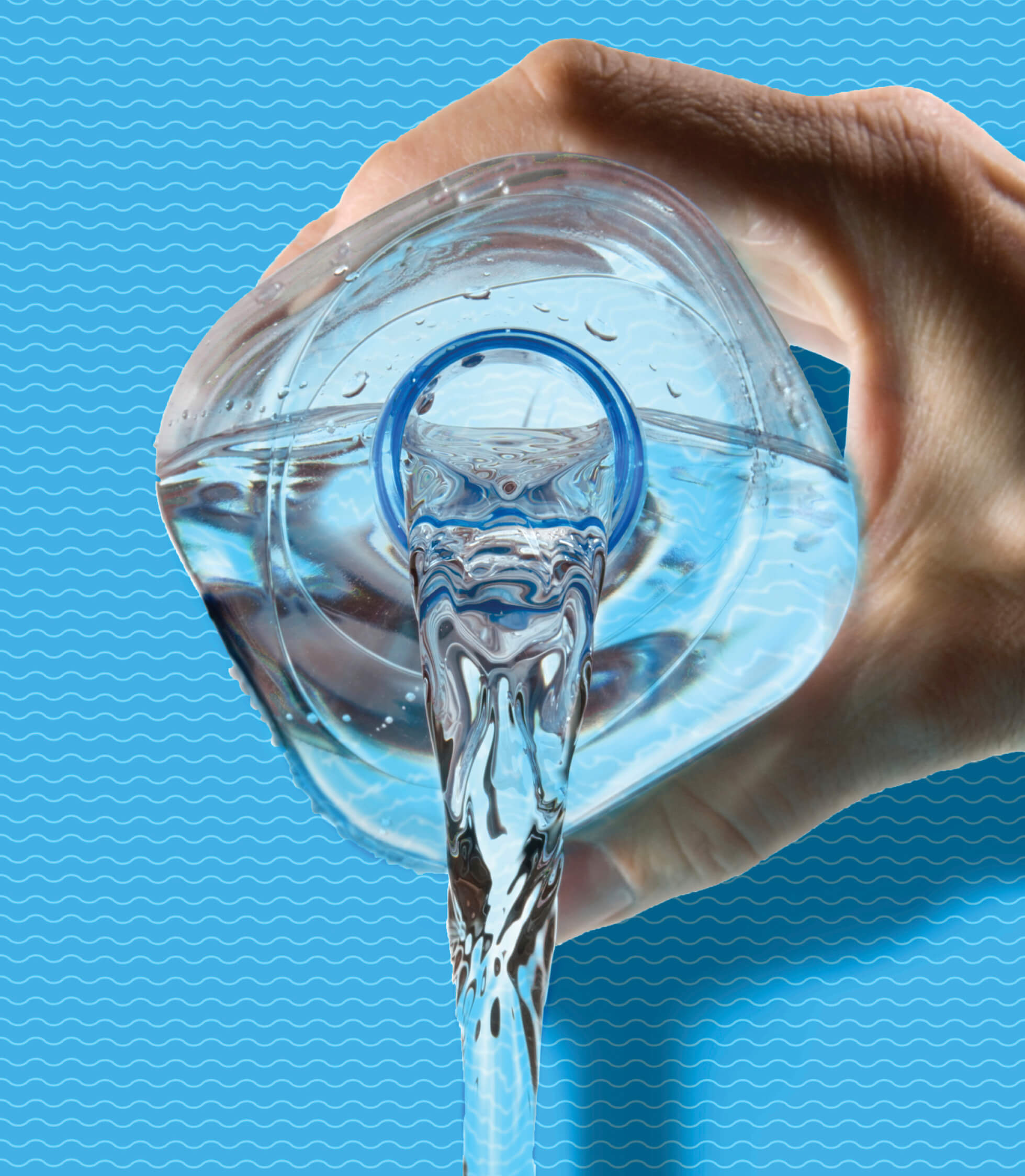
IF YOU COULD travel back in time a few decades, landing in the 1960s or ’70s, say, you’d be amused by some of the quaint things we used to do on a daily basis: Dial up a friend from a home phone, for example. Or show slides of our family vacation on a projector screen. Or drink water from the tap.
As normal as that seemed when we were kids, today many of us won’t drink tap water: Americans spent an estimated $49 billion in 2023 on bottled water and drank about 16 billion gallons, according to the Beverage Marketing Corporation. That’s a lot of bottled-up H2O.
And it adds up to a lot of extra money and a lot of extra plastic floating around the environment. Buying water for your family can be confusing and a bit stressful, though, because we’re not just buying jugs that say “water” on them. Now we have to choose between vitamin water, hydrogen water, mineral water, electrolyte water. How are all these options different? Is one better than another? And, are there any real health benefits to spending extra money on something that you can get for pennies from your kitchen sink?
The case for tap water
In general, the United States has some of the world’s safest drinking water, thanks to quality standards that public water systems must meet, and ongoing monitoring by the Environmental Protection Agency (EPA). Regardless of its source, public water is treated before it arrives in homes, to remove potential chemical and bacterial contamination before consumption.
In addition, an estimated 43 million Americans get their water from private underground wells. This water is not regulated, so homeowners are responsible for ensuring their supply is safe for drinking, usually through recommended annual testing.
Tap water doesn’t always taste or smell good—especially water from private wells, which can be cloudy or smell of sulfur—but that doesn’t necessarily mean it’s not good for you. A safe amount of chlorine, for example, may be used in city or county water to kill bacteria, viruses and other microorganisms that can make us sick. “Water can sometimes have a bad smell, taste or appearance, but these features don’t usually last long or indicate a public health concern,” says registered dietitian Kourtney Johnson. “Chlorine, chemicals or a medicine-like taste or smell don’t typically mean there’s an immediate health threat.” If there is an issue such as flooding or a chemical spill that endangers the local water supply, your local government or water utility will issue an advisory. (Be sure not to use ice or drink water from your refrigerator during an advisory.)
Still, there has been a lot of media attention around contaminated drinking water. In April 2024, the Biden administration finalized limits on “forever chemicals” in drinking water, requiring utilities to reduce them to the lowest measurable levels. Government officials say these chemicals, called PFAS (polyfluoroalkyl substances), are linked to liver disease, heart disease and certain cancers. In October 2024, the Biden administration also finalized rules requiring water systems around the country to identify and replace lead pipes within the next 10 years.
The facts about bottled water
The U.S. Food and Drug Administration (FDA) strictly regulates bottled water production and distribution. Bottled water companies are required to maintain sanitary conditions, protect the approved water sources and test the final product. So, like tap water, bottled water is generally safe. But that doesn’t mean there aren’t concerns.
Filtered water may remove fluoride, which at currently approved levels is safe to drink and helps prevent tooth decay. (Sometimes, manufacturers will reintroduce minerals after purification.)
Another concern is the plastic bottles most water comes in. Plastic breaks down over time, and tiny bits of the bottles themselves—known as microplastics—can enter the water. Plastic bottles may also contain chemicals such as bisphenol A (BPA) and other substances used to give plastic bottles transparency, shape and flexibility, and can leach into the water.
“Growing evidence shows that microplastics negatively affect the endocrine, reproductive and immune systems, as well as bacteria found in the gut. The thyroid plays a role in regulating almost all organs in the body, and long-term exposure to plastics negatively affects its ability to regulate growth, development, metabolism and reproduction,” Johnson says.
What are the different types of bottled water? These categories often overlap, but here’s a general breakdown.
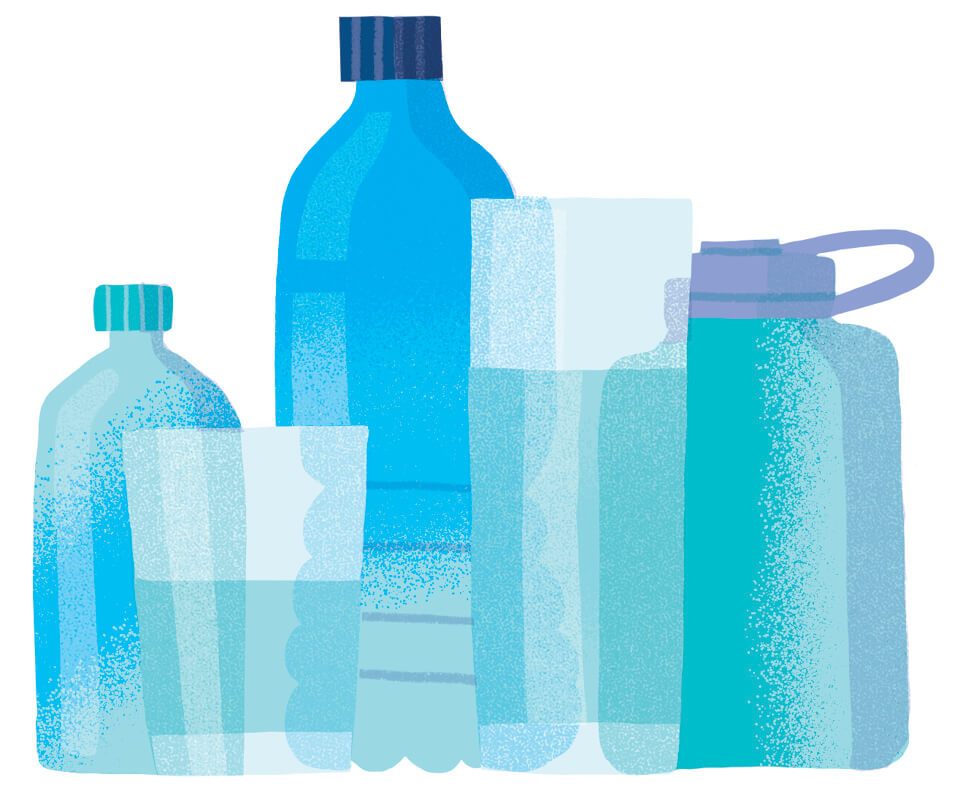
Your Bottled Water Guide
Here’s what the labels really mean
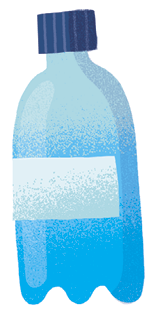
Bottled Water
(Dasani, Aquafina, Pure Life)
▶︎ Many large brands of bottled water come from municipal water supplies—the same place tap water comes from. Bottlers may then use additional purification measures, such as reverse osmosis, to remove unwanted tastes.
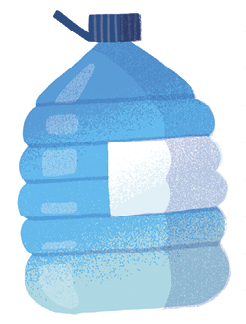
Spring Water
(Acqua Panna, Crystal Geyser, Evian, Poland Spring)
▶︎ Spring water originates from rainwater that moves underground and is filtered naturally by rocks and minerals. After it is pushed up to the ground’s surface, the water is collected from the spring. Per FDA regulations, when manufacturers bottle and sell it, it must have the same composition and quality as the spring water at its source.

Mineral Water
(Gerolsteiner, Perrier, Topo Chico, San Pellegrino)
▶︎ To be labeled mineral water, this type of spring water—which can be either sparkling or still—must contain at least 250 parts per million total dissolved solids (minerals and trace elements) that are present at the water source, which may include calcium, chlorine, magnesium, potassium, and iron.
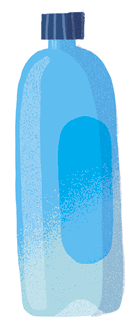
Alkaline Water
(Evamor, Flow, BodyArmor SportWater)
▶︎ Alkaline water is altered to a higher pH, which some claim can neutralize acid in the bloodstream, provide for enhanced workout recovery and help prevent disease. The science on these claims is limited, however.
“The body does an incredible job at keeping our pH within a very tight and controlled range. Consuming more alkaline water will not shift your pH outside of its normal range,” says Jen Hernandez, a registered dietitian who works with people with kidney disease.
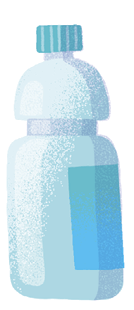
Enhanced Waters
(Vitaminwater, Essentia Hydroboost, Adirondack Enhanced Water)
▶︎ Some manufacturers enhance water by adding micronutrients, including vitamins and sometimes minerals. This water usually comes in sugar-sweetened and sugar-free options. In some brands, a 20-fluid-ounce bottle has up to 27 grams of added sugar—more than the American Heart Association recommends women consume in an entire day.
Vitamin-infused waters may contain more than 100 percent of the daily recommended value of vitamins B and C. But these are water-soluble vitamins, meaning that the kidneys will excrete any excess in your urine, Hernandez says. “It is ideal to get our vitamins from foods as they provide many other nutrients.”
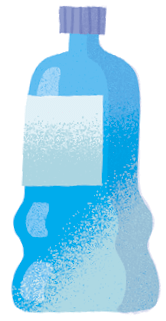
Electrolyte Water
(Core Hydration, Propel, Gatorade)
▶︎ Sports drinks are intended for athletes who lose a lot of fluid and electrolytes through sweat. Such drinks often aren’t necessary for moderate exercisers or sedentary people. Electrolyte water may be beneficial under certain circumstances, such as intense exercise, prolonged exposure to heat or when coping with vomiting and diarrhea. Experts say regular water is usually sufficient for meeting moderate exercise hydration needs.
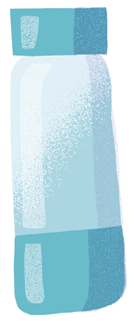
Hydrogen Water
(HFactor, H2 for Life, Susosu)
▶︎ Hydrogen water is plain water with hydrogen gas added to it. The water can be bought with the hydrogen in it, or people can purchase hydrogen tablets to add to water at home. Because hydrogen molecules are very tiny, they don’t create fizziness the way carbon dioxide molecules do, nor do they change the flavor of the water. A 2024 review of studies found that hydrogen water may have antioxidant and anti-inflammatory properties, as well as improve physical endurance. Most studies have been small, however, and findings are mixed.
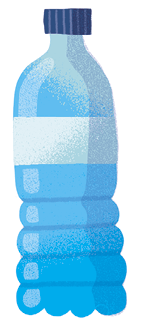
Purified Water
(Pure Life, Dasani Purified, Refreshe)
▶︎ To be labeled purified, the water goes into a production plant and through a process that can include distillation, deionization or reverse osmosis. It is then sold in individual, sanitary, sealed containers. Purification typically removes all unpleasant tastes and odors from the water as well.
Andrea Wickstrom is a registered nurse who has covered health and medical topics as well as health-related news for multiple publications including Next Avenue, NurseJournal, HeartValveSurgery.com and Healthnews.
From top: Getty Images; Illustrations by Beth Walrond